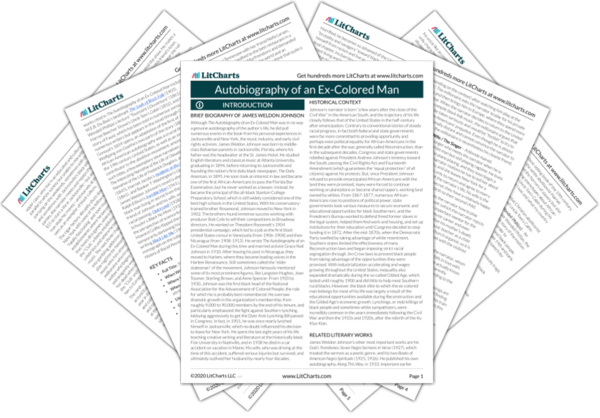LitCharts assigns a color and icon to each theme in Autobiography of an Ex-Colored Man, which you can use to track the themes throughout the work.
Racism and the Color Line
Collective Progress and Individual Achievement
Music, Emotion, and American Culture
Secrecy, Purity, and Origins
